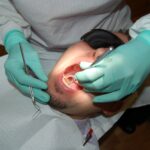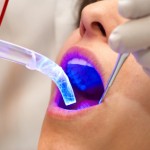Key points Artificial intelligence (AI) models show promise for detecting cavities, but their accuracy varies depending on the method used. AI may be better at detecting early cavities than advanced ones. Professional and dental cameras provide better results than smartphone cameras. Background Dental caries is a widespread problem, and early detection is crucial. While [read the full story…]
Detection of depression in primary care settings in low- and middle-income countries

Lucy Barrass considers a systematic review exploring the detection of depression in primary care settings in low- and middle-income countries.
[read the full story...]Root caries: detection and diagnosis

This Cochrane review assessing the diagnostic test accuracy of index tests for the detection and diagnosis of root caries in adults included 4 studies and 4997 root surfaces. The studies were all at high risk of bias meaning the available evidence is of very low certainty
[read the full story...]Oral cancer detection: Limited evidence for use of chemiluminescence and autofluorescent imaging devices in primary care

Early detection of oral cancer improves prognosis so methods to improve diagnosis are welcome. The review we look at today looks at two light-based systems: chemiluminescence or autofluorescence. 25 studies were included and they are well summarised but few were tested in primary care. Neither system provided much improvement on the level of sensitivity and specificity achieved by conventional oral examination. Therefore it is suggested that these tools are better suited to specialist clinics in which there is a higher prevalence of disease and where experienced clinicians may better discriminate between benign and malignant lesions.
[read the full story...]Some evidence for the presence of hepatitis viruses A, B and C in oral fluids

Viral hepatitis is caused by five distinct viruses (A-F) and they represent a significant worldwide healthcare problem. Three of the viruses hepatitis A, B and C (HAV, HBV, HCV) are the most common causes. Recently, there has been renewed interest in whether oral fluids can be considered as a source of viral hepatitis transmission. There [read the full story…]